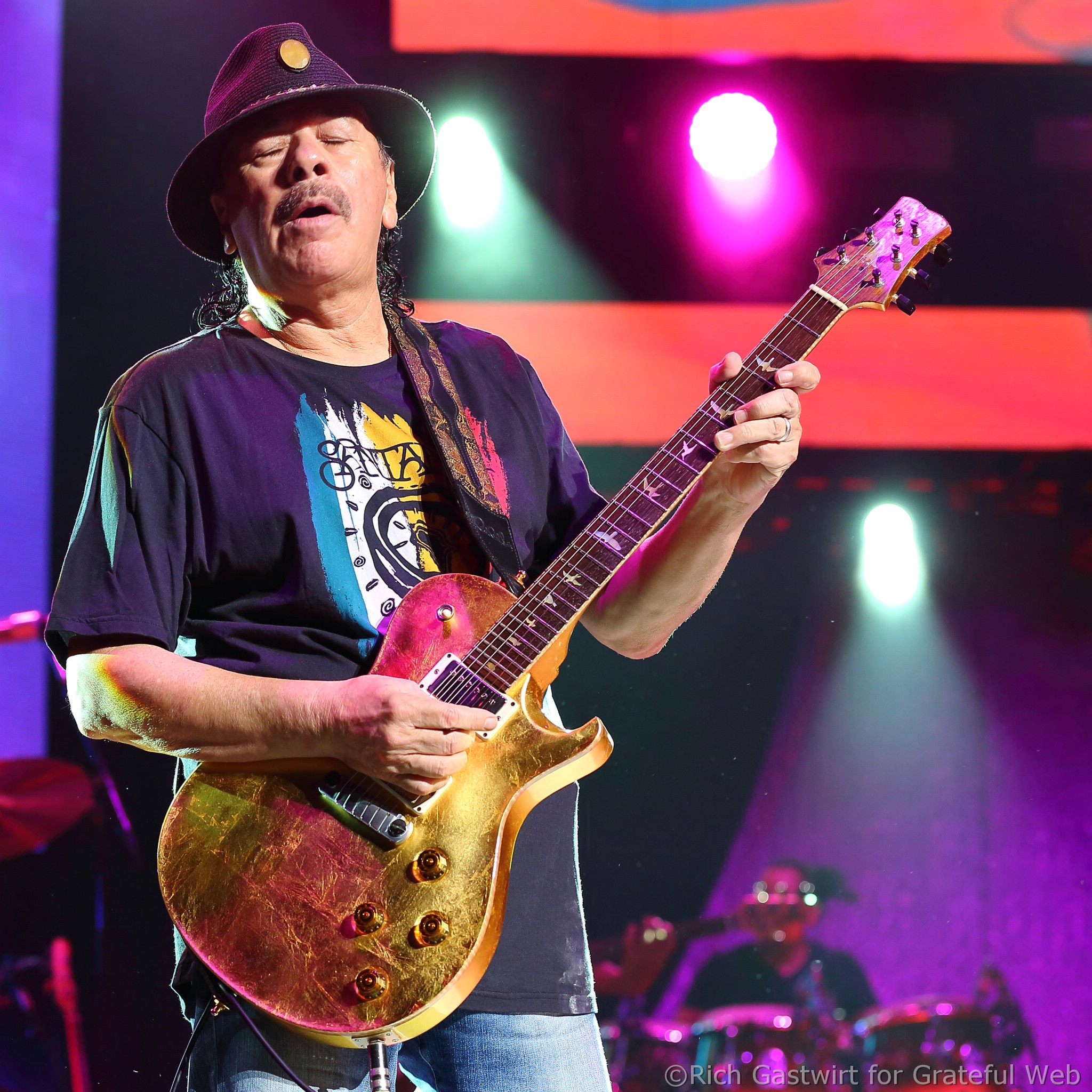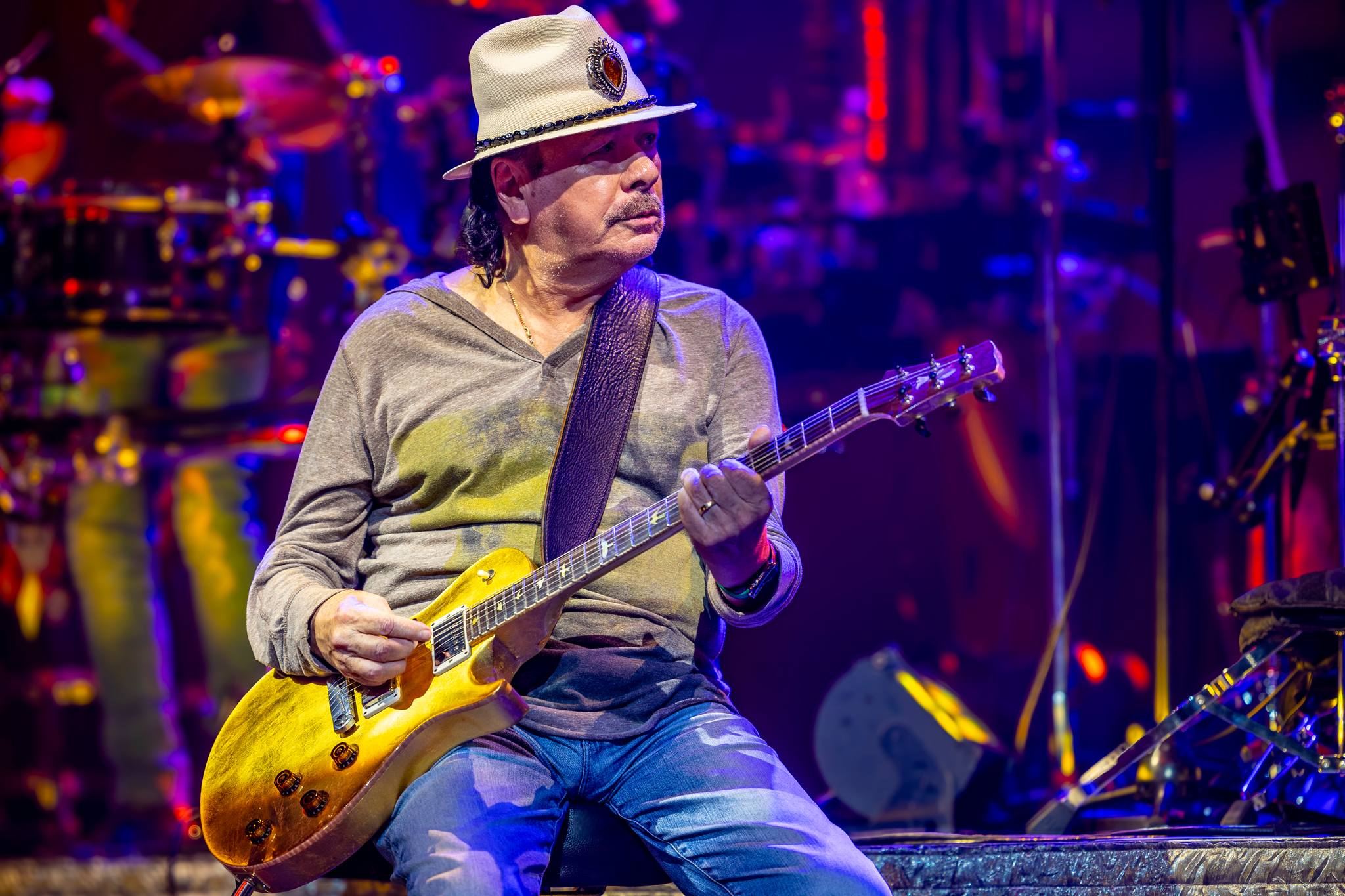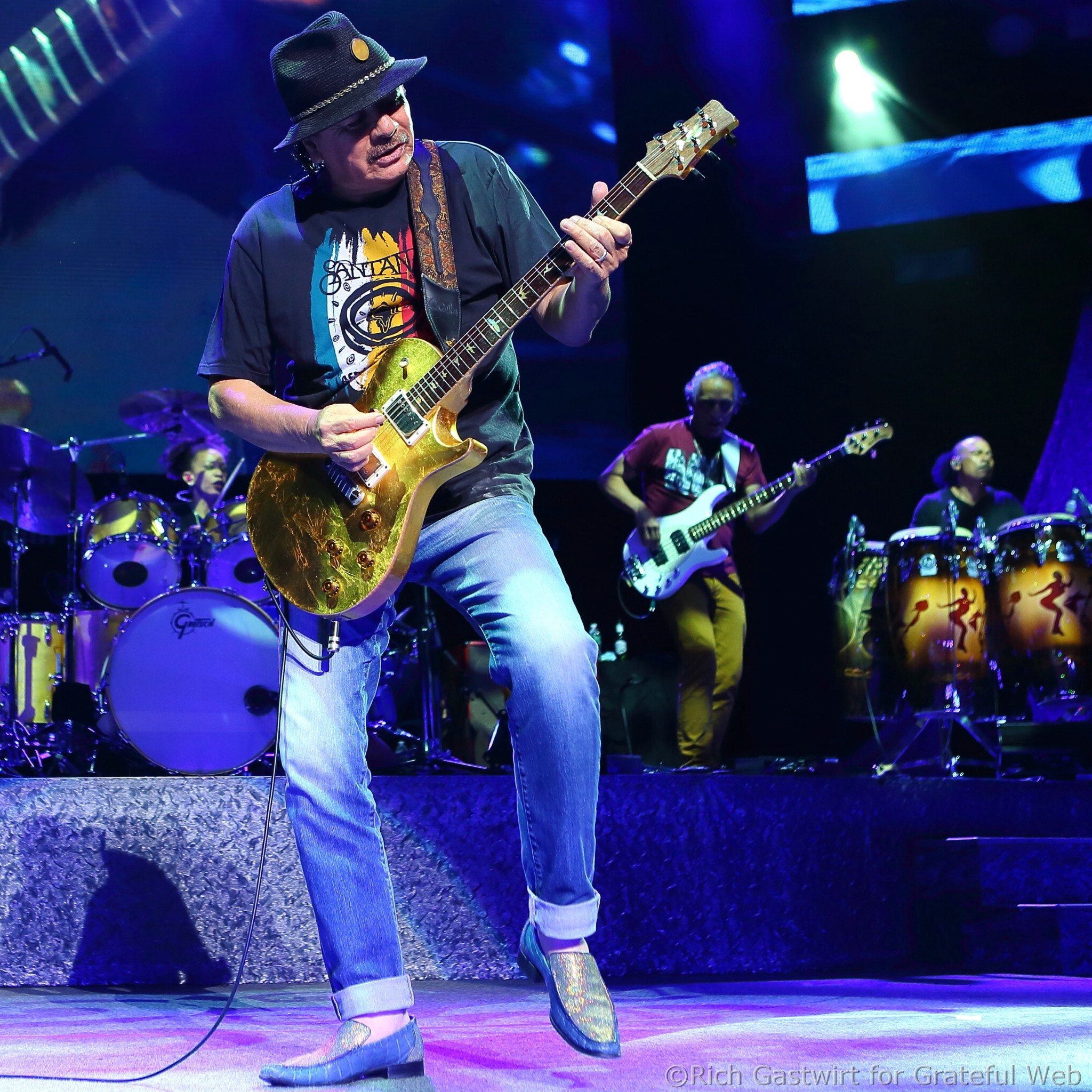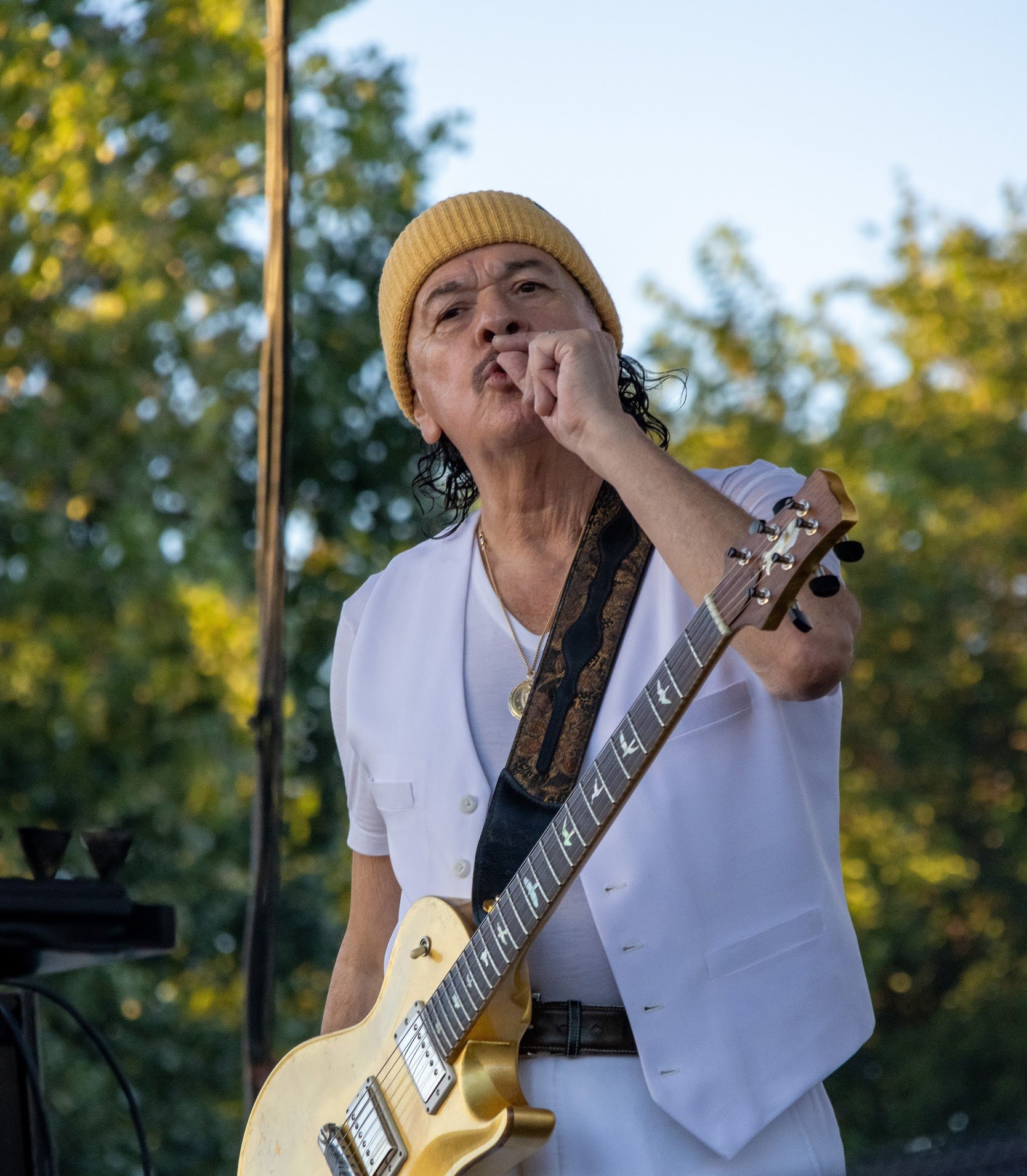On this day, July 20th, 2024, we gather to honor the incandescent spirit of Carlos Santana, a beacon in the world of music whose fiery guitar licks have ignited souls for decades. A maestro of the six-string, Santana's journey is a mesmerizing odyssey that spans continents and transcends time. His musical career, a sprawling landscape of sound and emotion, is adorned with moments that shimmer like stars in the vast cosmos.

Santana's ascent to the pantheon of musical legends was forged in the crucible of the late 1960s, a time when the world was ablaze with change. At the tender age of 22, Santana and his band took the stage at Woodstock in 1969, a performance that would etch their name into rock history. High on the potent mescaline gifted by none other than Jerry Garcia, Santana's hands danced over the frets in a frenzied ballet, his guitar singing with a voice both primal and celestial. It was a baptism by fire, and the world bore witness to the birth of a legend.

Santana's playing style is a kaleidoscope of influences, woven with threads of blues, rock, Latin rhythms, and spiritual exploration. His guitar is not merely an instrument but an extension of his very soul, capable of conjuring emotions as varied as joy, sorrow, and ecstasy. He paints outside the frame, much like his dear friend Jerry Garcia. Santana once wrote in Rolling Stone, "Most people who play the blues are very conservative. They stay a certain way. Jerry Garcia was painting outside the frame. He played blues but mixed it with bluegrass and Ravi Shankar. He had country and Spanish in there."
Their bond was more than musical; it was a communion of kindred spirits. Santana often spoke of Garcia with a reverence reserved for the enlightened. "Jerry was the Sun of the Grateful Dead – the music they played was like planets orbiting around him," Santana mused. "He wasn’t a superficial guy at all. It was a lot of fun to play with him because he was very accommodating. He’d go up and down; I’d go left and right. And I could tell he enjoyed it because the Dead always invited me back."
Their collaborations are etched in the lore of rock 'n' roll: the Grateful Dead and Santana sharing the stage at the Calaveras County Fairgrounds on August 23, 1987, and the electrifying performance in Las Vegas on April 28, 1991, where Santana joined the Dead for a mind-blowing, face-melting rendition of "Bird Song." Santana opened for the Dead at Mile High Stadium on June 28, 1991, a night that resonated with the energy of a thousand suns. These moments are not just footnotes in history; they are the stuff of legend.
Santana's love for Garcia and the Dead was a reciprocal dance. They would jam separately from the Dead, with Garcia plugging into his jazz knowledge and diversifying his playing style while trading licks with Santana. "There was a lot of Chet Atkins in him – going up and down the frets. But you could always hear a theme in his playing," Santana continued. "It’s like putting beads on a string, instead of throwing them around a room. Jerry had a tremendous sense of purpose. When you take a solo, decide what to say, get there and give it to the next guy. That’s how Jerry worked in the Dead."

Santana's oeuvre is a treasure trove of sonic jewels. Here are fifteen of his best-known songs, each a reflection of his genius:
"Black Magic Woman" - A spellbinding blend of blues and Latin rock, this song casts a hypnotic spell with its haunting melody and Santana's soulful guitar work.
"Oye Como Va" - A jubilant celebration of rhythm and melody, this song is a quintessential Santana classic, embodying the essence of Latin rock.
"Samba Pa Ti" - A poignant instrumental that speaks volumes without uttering a single word, showcasing Santana's ability to convey deep emotion through his guitar.
"Europa (Earth's Cry Heaven's Smile)" - A sublime instrumental that weaves a tale of longing and hope, this song is a masterclass in musical storytelling.
"Smooth" (feat. Rob Thomas) - A modern classic that brought Santana back to the forefront of popular music, its irresistible groove and infectious melody make it a timeless hit.
"Evil Ways" - A gritty, blues-infused track that captures the raw energy of Santana's early days, it remains a fan favorite.
"Soul Sacrifice" - The explosive Woodstock performance of this track is legendary, a primal display of Santana's virtuosity and passion.
"Maria Maria" (feat. The Product G&B) - A sultry, groove-laden track that blends Latin, R&B, and hip-hop influences, it showcases Santana's versatility.
"No One to Depend On" - A fiery, high-energy track that highlights Santana's impeccable sense of rhythm and his band's tight musicianship.
"Hope You're Feeling Better" - A powerful rock anthem with a driving beat and Santana's searing guitar solos.
"Winning" - An uplifting, anthemic song that exudes positivity and resilience, it remains an inspirational favorite.
"Everybody's Everything" - A high-octane track that fuses rock, soul, and Latin influences into a thrilling musical ride.
"She's Not There" - Santana's cover of The Zombies' hit infuses it with his signature style, transforming it into a new classic.
"The Game of Love" (feat. Michelle Branch) - A catchy, pop-infused track that demonstrates Santana's ability to stay relevant across decades.
"Put Your Lights On" (feat. Everlast) - A haunting, moody track that blends rock and hip-hop elements, it showcases Santana's knack for collaboration and innovation.

As we celebrate Santana's birthday, we are reminded of the profound impact he has had on the world of music. His journey is a reflection of the power of passion, creativity, and the unyielding spirit of exploration. Santana's music, much like the man himself, is a force of nature – wild, untamed, and eternally vibrant. Here’s to you, Carlos Santana, a true maestro whose legacy will continue to illuminate the hearts and minds of music lovers for generations to come.






















